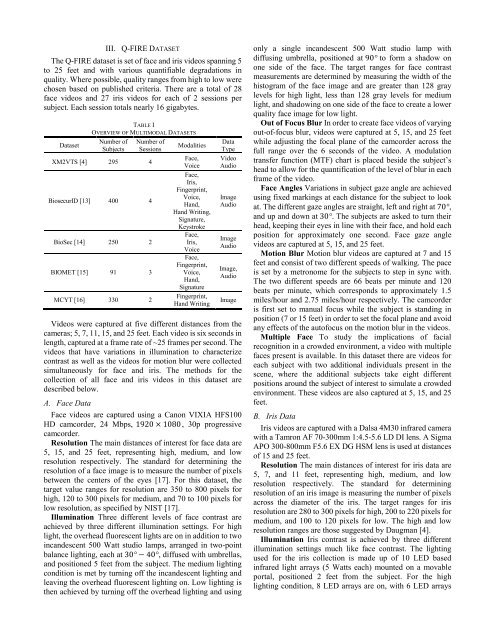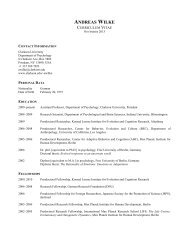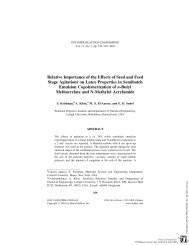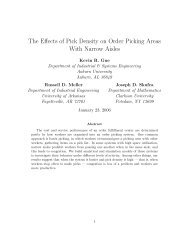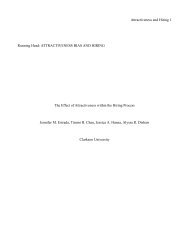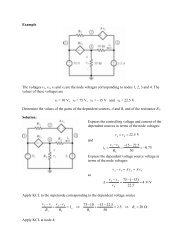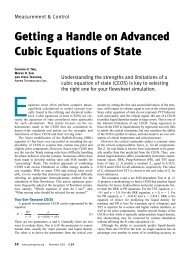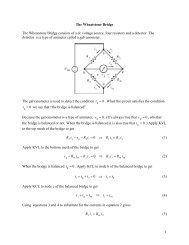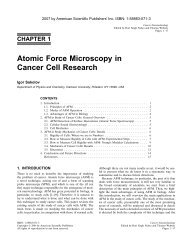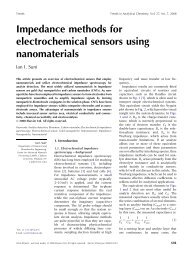Quality in Face and Iris Research Ensemble (Q ... - Clarkson University
Quality in Face and Iris Research Ensemble (Q ... - Clarkson University
Quality in Face and Iris Research Ensemble (Q ... - Clarkson University
You also want an ePaper? Increase the reach of your titles
YUMPU automatically turns print PDFs into web optimized ePapers that Google loves.
III. Q-FIRE DATASET<br />
The Q-FIRE dataset is set of face <strong>and</strong> iris videos spann<strong>in</strong>g 5<br />
to 25 feet <strong>and</strong> with various quantifiable degradations <strong>in</strong><br />
quality. Where possible, quality ranges from high to low were<br />
chosen based on published criteria. There are a total of 28<br />
face videos <strong>and</strong> 27 iris videos for each of 2 sessions per<br />
subject. Each session totals nearly 16 gigabytes.<br />
Dataset<br />
TABLE I<br />
OVERVIEW OF MULTIMODAL DATASETS<br />
Number of<br />
Subjects<br />
Number of<br />
Sessions<br />
XM2VTS [4] 295 4<br />
BiosecurID [13] 400 4<br />
BioSec [14] 250 2<br />
BIOMET [15] 91 3<br />
MCYT [16] 330 2<br />
Modalities<br />
<strong>Face</strong>,<br />
Voice<br />
<strong>Face</strong>,<br />
<strong>Iris</strong>,<br />
F<strong>in</strong>gerpr<strong>in</strong>t,<br />
Voice,<br />
H<strong>and</strong>,<br />
H<strong>and</strong> Writ<strong>in</strong>g,<br />
Signature,<br />
Keystroke<br />
<strong>Face</strong>,<br />
<strong>Iris</strong>,<br />
Voice<br />
<strong>Face</strong>,<br />
F<strong>in</strong>gerpr<strong>in</strong>t,<br />
Voice,<br />
H<strong>and</strong>,<br />
Signature<br />
F<strong>in</strong>gerpr<strong>in</strong>t,<br />
H<strong>and</strong> Writ<strong>in</strong>g<br />
Data<br />
Type<br />
Video<br />
Audio<br />
Image<br />
Audio<br />
Image<br />
Audio<br />
Image,<br />
Audio<br />
Image<br />
Videos were captured at five different distances from the<br />
cameras; 5, 7, 11, 15, <strong>and</strong> 25 feet. Each video is six seconds <strong>in</strong><br />
length, captured at a frame rate of ~25 frames per second. The<br />
videos that have variations <strong>in</strong> illum<strong>in</strong>ation to characterize<br />
contrast as well as the videos for motion blur were collected<br />
simultaneously for face <strong>and</strong> iris. The methods for the<br />
collection of all face <strong>and</strong> iris videos <strong>in</strong> this dataset are<br />
described below.<br />
A. <strong>Face</strong> Data<br />
<strong>Face</strong> videos are captured us<strong>in</strong>g a Canon VIXIA HFS100<br />
HD camcorder, 24 Mbps, 1920 � 1080 , 30p progressive<br />
camcorder.<br />
Resolution The ma<strong>in</strong> distances of <strong>in</strong>terest for face data are<br />
5, 15, <strong>and</strong> 25 feet, represent<strong>in</strong>g high, medium, <strong>and</strong> low<br />
resolution respectively. The st<strong>and</strong>ard for determ<strong>in</strong><strong>in</strong>g the<br />
resolution of a face image is to measure the number of pixels<br />
between the centers of the eyes [17]. For this dataset, the<br />
target value ranges for resolution are 350 to 800 pixels for<br />
high, 120 to 300 pixels for medium, <strong>and</strong> 70 to 100 pixels for<br />
low resolution, as specified by NIST [17].<br />
Illum<strong>in</strong>ation Three different levels of face contrast are<br />
achieved by three different illum<strong>in</strong>ation sett<strong>in</strong>gs. For high<br />
light, the overhead fluorescent lights are on <strong>in</strong> addition to two<br />
<strong>in</strong>c<strong>and</strong>escent 500 Watt studio lamps, arranged <strong>in</strong> two-po<strong>in</strong>t<br />
balance light<strong>in</strong>g, each at 30° �40°, diffused with umbrellas,<br />
<strong>and</strong> positioned 5 feet from the subject. The medium light<strong>in</strong>g<br />
condition is met by turn<strong>in</strong>g off the <strong>in</strong>c<strong>and</strong>escent light<strong>in</strong>g <strong>and</strong><br />
leav<strong>in</strong>g the overhead fluorescent light<strong>in</strong>g on. Low light<strong>in</strong>g is<br />
then achieved by turn<strong>in</strong>g off the overhead light<strong>in</strong>g <strong>and</strong> us<strong>in</strong>g<br />
only a s<strong>in</strong>gle <strong>in</strong>c<strong>and</strong>escent 500 Watt studio lamp with<br />
diffus<strong>in</strong>g umbrella, positioned at 90° to form a shadow on<br />
one side of the face. The target ranges for face contrast<br />
measurements are determ<strong>in</strong>ed by measur<strong>in</strong>g the width of the<br />
histogram of the face image <strong>and</strong> are greater than 128 gray<br />
levels for high light, less than 128 gray levels for medium<br />
light, <strong>and</strong> shadow<strong>in</strong>g on one side of the face to create a lower<br />
quality face image for low light.<br />
Out of Focus Blur In order to create face videos of vary<strong>in</strong>g<br />
out-of-focus blur, videos were captured at 5, 15, <strong>and</strong> 25 feet<br />
while adjust<strong>in</strong>g the focal plane of the camcorder across the<br />
full range over the 6 seconds of the video. A modulation<br />
transfer function (MTF) chart is placed beside the subject’s<br />
head to allow for the quantification of the level of blur <strong>in</strong> each<br />
frame of the video.<br />
<strong>Face</strong> Angles Variations <strong>in</strong> subject gaze angle are achieved<br />
us<strong>in</strong>g fixed mark<strong>in</strong>gs at each distance for the subject to look<br />
at. The different gaze angles are straight, left <strong>and</strong> right at 70°,<br />
<strong>and</strong> up <strong>and</strong> down at 30°. The subjects are asked to turn their<br />
head, keep<strong>in</strong>g their eyes <strong>in</strong> l<strong>in</strong>e with their face, <strong>and</strong> hold each<br />
position for approximately one second. <strong>Face</strong> gaze angle<br />
videos are captured at 5, 15, <strong>and</strong> 25 feet.<br />
Motion Blur Motion blur videos are captured at 7 <strong>and</strong> 15<br />
feet <strong>and</strong> consist of two different speeds of walk<strong>in</strong>g. The pace<br />
is set by a metronome for the subjects to step <strong>in</strong> sync with.<br />
The two different speeds are 66 beats per m<strong>in</strong>ute <strong>and</strong> 120<br />
beats per m<strong>in</strong>ute, which corresponds to approximately 1.5<br />
miles/hour <strong>and</strong> 2.75 miles/hour respectively. The camcorder<br />
is first set to manual focus while the subject is st<strong>and</strong><strong>in</strong>g <strong>in</strong><br />
position (7 or 15 feet) <strong>in</strong> order to set the focal plane <strong>and</strong> avoid<br />
any effects of the autofocus on the motion blur <strong>in</strong> the videos.<br />
Multiple <strong>Face</strong> To study the implications of facial<br />
recognition <strong>in</strong> a crowded environment, a video with multiple<br />
faces present is available. In this dataset there are videos for<br />
each subject with two additional <strong>in</strong>dividuals present <strong>in</strong> the<br />
scene, where the additional subjects take eight different<br />
positions around the subject of <strong>in</strong>terest to simulate a crowded<br />
environment. These videos are also captured at 5, 15, <strong>and</strong> 25<br />
feet.<br />
B. <strong>Iris</strong> Data<br />
<strong>Iris</strong> videos are captured with a Dalsa 4M30 <strong>in</strong>frared camera<br />
with a Tamron AF 70-300mm 1:4.5-5.6 LD DI lens. A Sigma<br />
APO 300-800mm F5.6 EX DG HSM lens is used at distances<br />
of 15 <strong>and</strong> 25 feet.<br />
Resolution The ma<strong>in</strong> distances of <strong>in</strong>terest for iris data are<br />
5, 7, <strong>and</strong> 11 feet, represent<strong>in</strong>g high, medium, <strong>and</strong> low<br />
resolution respectively. The st<strong>and</strong>ard for determ<strong>in</strong><strong>in</strong>g<br />
resolution of an iris image is measur<strong>in</strong>g the number of pixels<br />
across the diameter of the iris. The target ranges for iris<br />
resolution are 280 to 300 pixels for high, 200 to 220 pixels for<br />
medium, <strong>and</strong> 100 to 120 pixels for low. The high <strong>and</strong> low<br />
resolution ranges are those suggested by Daugman [4].<br />
Illum<strong>in</strong>ation <strong>Iris</strong> contrast is achieved by three different<br />
illum<strong>in</strong>ation sett<strong>in</strong>gs much like face contrast. The light<strong>in</strong>g<br />
used for the iris collection is made up of 10 LED based<br />
<strong>in</strong>frared light arrays (5 Watts each) mounted on a movable<br />
portal, positioned 2 feet from the subject. For the high<br />
light<strong>in</strong>g condition, 8 LED arrays are on, with 6 LED arrays


